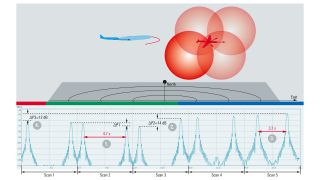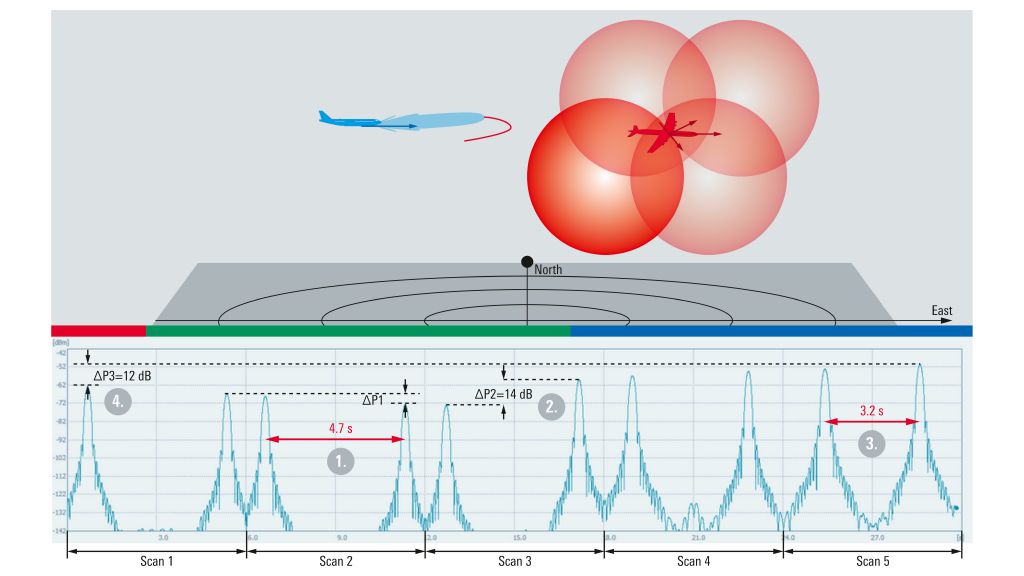Simulation of a realistic flight scenario
The flight path of the receiver (slowly moving red aircraft) was imported from a trajectory simulator. The flight path is defined as waypoint file (proprietary *.xtd format) that includes location and attitude information with timestamps. The flight path of the emitter (blue aircraft) uses a predefined trajectory provided by the R&S®Pulse Sequencer software. In this scenario, it is assumed that the radar of the blue emitter aircraft operates in the X-band and uses a pencil beam together with a raster scan. The light blue shaded area shows the sector that is covered by the raster scan. The scan rate is 30°/s (raster width 90°). The red aircraft carries radar warning equipment with 360° azimuthal coverage as part of its electronic support measure (ESM) system. It uses four sector antennas with cardioid antenna patterns.
Simulation of the receive power level
The figure shows the level variation due to the previously described flight scenario. Only the RF power level trace of one of the receiver’s four sector antennas is shown. The scenario contains three time intervals (red, green and blue bar). At the beginning of the scenario (red interval), the receiver is located at the 1 o’clock position relative to the emitter heading (blue aircraft). Later, during the green interval, two groups with two peaks each occur. These peaks result from the raster scan of the emitter’s pencil beam (1). During scan 2, the spacing between the two peaks is about 4.7 s. This means that the receiver is located off to the middle of the raster width. As the receiver aircraft rolls left in order to turn, the second group of peaks in the green interval has lower peaks (ΔP1). Due to this flight path, the cardioid antenna pattern is tilted downward. This tilt reduces the antenna gain toward the approaching emitter, causing the received power level to decrease. During the blue interval at around second 17 of the simulation, the red aircraft has rolled back to its initial attitude heading northeast, leading to a significant increase in the received power of approx. ΔP2 =14 dB (2). During the blue interval, the emitter steadily approaches the receiver. The received power increases even more by an additional ΔP3 =12 dB compared with the initial value at the start of the scenario (4). The red aircraft is now almost at the 12 o’clock position relative to the flight path of the blue aircraft. Therefore, the received peaks of the emitter’s transmit signal during scan 5 now have a spacing of 3.2 s (3). The red aircraft is almost in the middle of the raster scan.







